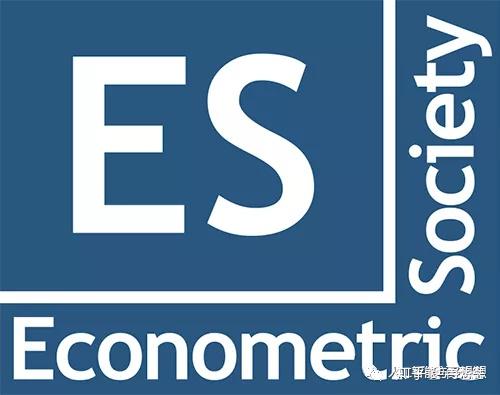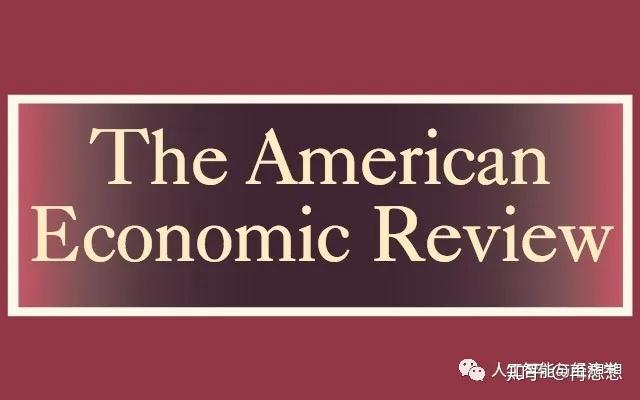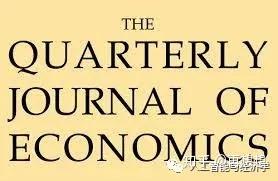国际顶尖期刊(Econometrica ,AER,JPE,QJE..)上的机器学习方法

Gentzkow M, Shapiro J M, Taddy M. Measuring Group Differences in High‐Dimensional Choices: Method and Application to Congressional Speech[J]. Econometrica, 2019, 87(4): 1307-1340.
机器学习用于处理高维数据
We study the problem of measuring group differences in choices when the dimensionality of the choice set is large. We show that standard approaches suffer from a severe finite‐sample bias, and we propose an estimator that applies recent advances in machine learning to address this bias. We apply this method to measure trends in the partisanship of congressional speech from 1873 to 2016, defining partisanship to be the ease with which an observer could infer a congressperson's party from a single utterance. Our estimates imply that partisanship is far greater in recent years than in the past, and that it increased sharply in the early 1990s after remaining low and relatively constant over the preceding century.

Gentzkow M, Kelly B, Taddy M. Text as data[J]. Journal of Economic Literature, 2019, 57(3): 535-74.
文本数据
An ever-increasing share of human interaction, communication, and culture is recorded as digital text. We provide an introduction to the use of text as an input to economic research. We discuss the features that make text different from other forms of data, offer a practical overview of relevant statistical methods, and survey a variety of applications. (JEL C38, C55, L82, Z13)

Ludwig, Jens, Sendhil Mullainathan, and Jann Spiess. 2019. "Augmenting Pre-Analysis Plans with Machine Learning." AEA Papers and Proceedings , 109: 71-76.
机器学习在预分析方案中的使用
Concerns about the dissemination of spurious results have led to calls for pre-analysis plans (PAPs) to avoid ex-post "p-hacking." But often the conceptual hypotheses being tested do not imply the level of specificity required for a PAP. In this paper we suggest a framework for PAPs that capitalize on the availability of causal machine-learning (ML) techniques, in which researchers combine specific aspects of the analysis with ML for the flexible estimation of unspecific remainders. A "cheap-lunch" result shows that the inclusion of ML produces limited worst-case costs in power, while offering a substantial upside from systematic specification searches.
Mullainathan, Sendhil, and Ziad Obermeyer. 2017. "Does Machine Learning Automate Moral Hazard and Error?" American Economic Review , 107 (5): 476-80.
机器学习在医保的应用
Machine learning tools are beginning to be deployed en masse in health care. While the statistical underpinnings of these techniques have been questioned with regard to causality and stability, we highlight a different concern here, relating to measurement issues. A characteristic feature of health data, unlike other applications of machine learning, is that neither y nor x is measured perfectly. Far from a minor nuance, this can undermine the power of machine learning algorithms to drive change in the health care system--and indeed, can cause them to reproduce and even magnify existing errors in human judgment.
Chernozhukov, Victor, Denis Chetverikov, Mert Demirer, Esther Duflo, Christian Hansen, and Whitney Newey. 2017. "Double/Debiased/Neyman Machine Learning of Treatment Effects."
American Economic Review
, 107 (5): 261-65.
机器学习在treatment effects的使用
Chernozhukov et al. (2016) provide a generic double/de-biased machine learning (ML) approach for obtaining valid inferential statements about focal parameters, using Neyman-orthogonal scores and cross-fitting, in settings where nuisance parameters are estimated using ML methods. In this note, we illustrate the application of this method in the context of estimating average treatment effects and average treatment effects on the treated using observational data.
Kleinberg, J., et al. (2015). "Prediction Policy Problems." American Economic Review *105* (5): 491-495.
预测政策问题
Most empirical policy work focuses on causal inference. We argue an important class of policy problems does not require causal inference but instead requires predictive inference. Solving these "prediction policy problems" requires more than simple regression techniques, since these are tuned to generating unbiased estimates of coefficients rather than minimizing prediction error. We argue that new developments in the field of "machine learning" are particularly useful for addressing these prediction problems. We use an example from health policy to illustrate the large potential social welfare gains from improved prediction.
Handel, B. and J. Kolstad (2017). "Wearable Technologies and Health Behaviors: New Data and New Methods to Understand Population Health." American Economic Review *107* (5): 481-485.
可穿戴技术和健康行为:了解人口健康的新数据和新方法
We study a randomized control trial in a large employer population of access to "wearable" technologies and the associated planning and monitoring tools on improved health behaviors (sleep and exercise). Both ITT and IV estimates based on actual plan enrollment for the treatment group suggest statistically significant but economically small changes in behavior after three months. We then implement machine learning-based models to assess treatment effect heterogeneity. We find little evidence for heterogeneous treatment effects base on observables. We also present detailed data on sleep patterns underscoring the value of this new data source to researchers.
Bajari, P., et al. (2015). "Machine Learning Methods for Demand Estimation." American Economic Review
*105*
(5): 481-485.
用于估计需求的机器学习方法
We survey and apply several techniques from the statistical and computer science literature to the problem of demand estimation. To improve out-of-sample prediction accuracy, we propose a method of combining the underlying models via linear regression. Our method is robust to a large number of regressors; scales easily to very large data sets; combines model selection and estimation; and can flexibly approximate arbitrary non-linear functions. We illustrate our method using a standard scanner panel data set and find that our estimates are considerably more accurate in out-of-sample predictions of demand than some commonly used alternatives.
Chalfin, A., et al. (2016). "Productivity and Selection of Human Capital with Machine Learning." American Economic Review *106* (5): 124-127.
机器学习的生产力与人力资本选择
Economists have become increasingly interested in studying the nature of production functions in social policy applications, with the goal of improving productivity. Traditionally models have assumed workers are homogenous inputs. However, in practice, substantial variability in productivity means the marginal productivity of labor depends substantially on which new workers are hired--which requires not an estimate of a causal effect, but rather a prediction. We demonstrate that there can be large social welfare gains from using machine learning tools to predict worker productivity, using data from two important applications - police hiring and teacher tenure decisions.
Deryugina, T., et al. (2019). "The Mortality and Medical Costs of Air Pollution: Evidence from Changes in Wind Direction." American Economic Review *109* (12): 4178-4219.
空气污染的死亡率和医疗费用:来自风向变化的证据
We estimate the causal effects of acute fine particulate matter exposure on mortality, health care use, and medical costs among the US elderly using Medicare data. We instrument for air pollution using changes in local wind direction and develop a new approach that uses machine learning to estimate the life-years lost due to pollution exposure. Finally, we characterize treatment effect heterogeneity using both life expectancy and generic machine learning inference. Both approaches find that mortality effects are concentrated in about 25 percent of the elderly population.

Bandiera, O., et al. (2019). "CEO Behavior and Firm Performance." Journal of Political Economy: 000-000.
CEO行为与公司绩效
We develop a new method to measure CEO behavior in large samples via a survey that collects high-frequency, high-dimensional diary data and a machine learning algorithm that estimates behavioral types. Applying this method to 1,114 CEOs in six countries reveals two types: ?leaders,? who do multifunction, high-level meetings, and ?managers,? who do individual meetings with core functions. Firms that hire leaders perform better, and it takes three years for a new CEO to make a difference. Structural estimates indicate that productivity differentials are due to mismatches rather than to leaders being better for all firms.

Kleinberg, J., et al. (2017). "Human Decisions and Machine Predictions ." The Quarterly Journal of Economics **133* (1): 237-293.
人类决策和机器预测
Can machine learning improve human decision making? Bail decisions provide a good test case. Millions of times each year, judges make jail-or-release decisions that hinge on a prediction of what a defendant would do if released. The concreteness of the prediction task combined with the volume of data available makes this a promising machine-learning application. Yet comparing the algorithm to judges proves complicated. First, the available data are generated by prior judge decisions. We only observe crime outcomes for released defendants, not for those judges detained. This makes it hard to evaluate counterfactual decision rules based on algorithmic predictions. Second, judges may have a broader set of preferences than the variable the algorithm predicts; for instance, judges may care specifically about violent crimes or about racial inequities. We deal with these problems using different econometric strategies, such as quasi-random assignment of cases to judges. Even accounting for these concerns, our results suggest potentially large welfare gains: one policy simulation shows crime reductions up to 24.7% with no change in jailing rates, or jailing rate reductions up to 41.9% with no increase in crime rates. Moreover, all categories of crime, including violent crimes, show reductions; these gains can be achieved while simultaneously reducing racial disparities. These results suggest that while machine learning can be valuable, realizing this value requires integrating these tools into an economic framework: being clear about the link between predictions and decisions; specifying the scope of payoff functions; and constructing unbiased decision counterfactuals.

Athey, S. (2017). "Beyond prediction: Using big data for policy problems." Science *355* (6324): 483.
超越预测:使用大数据解决政策问题
Machine-learning prediction methods have been extremely productive in applications ranging from medicine to allocating fire and health inspectors in cities. However, there are a number of gaps between making a prediction and making a decision, and underlying assumptions need to be understood in order to optimize data-driven decision-making.

Gu, S., et al. (2020). "Empirical Asset Pricing via Machine Learning." The Review of Financial Studies.
通过机器学习进行实证资产定价
We perform a comparative analysis of machine learning methods for the canonical problem of empirical asset pricing: measuring asset risk premiums. We demonstrate large economic gains to investors using machine learning forecasts, in some cases doubling the performance of leading regression-based strategies from the literature. We identify the best-performing methods (trees and neural networks) and trace their predictive gains to allowing nonlinear predictor interactions missed by other methods. All methods agree on the same set of dominant predictive signals, a set that includes variations on momentum, liquidity, and volatility.
更新于:2020年03月20号
微信公共号:人工智能与经济学(WeChat ID: AI-ECON)

